2.4.9 Summary
- Institutions are encouraged to conduct institutional assessment to understand the current level of gender responsiveness across an organisation in order to make data informed decisions.
- When deciding to conduct institutional assessment, there are options to conduct a self-assessment or to use an external contractor.
- The assessment can be
conducted by:
- Assessing GESI at a Structural Level: which focuses on the structural causes, also referred to as “root causes”, relate to barriers to achieving GESI compliance within TVET/HE institutions.
- Taking a Participatory Approach: involves partnering with organisations that represent the stakeholder/communities targeted for GESI assessment.
- There are pre-existing
Tools that could guide self-assessment. Some of them are:
- CIVICUS Tool – a self-assessment tool for measurement of Diversity & Inclusion at the organisational level
- ILO Guide on Making TVET and Skill Development Inclusive for All
- Tools from The National Gender and Equality Commission, including: “Gender Mainstreaming in the PC 2021- 2022” – outlines key KPIs related to gender mainstreaming for the TVET-A, “Gender Mainstreaming Reporting Tool and Measuring Performance 2021-2022”,and “Policy implementation monitoring Gender Mainstreaming 1”.

| Previous | Next |






